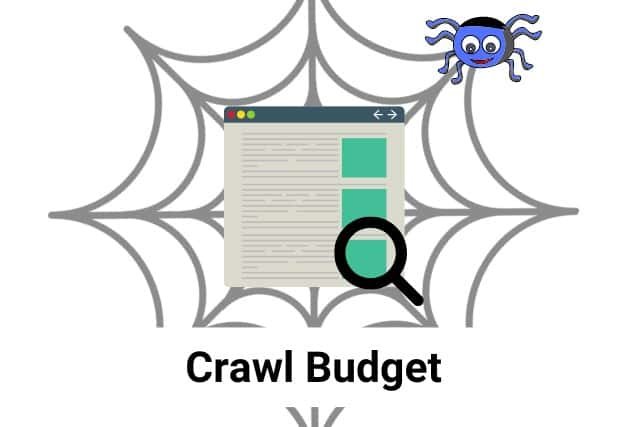
The concept of crawl budget at Google is a question that intrigues many SEO professionals.
How does Google determine resources allocated to website crawling, and how does this affect your crawl optimization strategy?
Here, we’ll break this concept down into ten key points to better understand whether the crawl budget is something you should care about.
What is Googlebot?
The idea of the crawl budget is not new. Since the early days of SEO, experts have sought to understand how search engines work. The term reflects a limited resource that Google would allocate to each site.
It’s like a financial budget but to crawl capacity by the Googlebot. Each site would therefore have a daily quota according to which it can be crawled, thus influencing the frequency with which its pages are updated in the Google index.
Googlebot is Google’s crawler. It visits and indexes web pages and then displays them in search results. To simplify, think of it as a little spider crawling the web to bring fresh information to Google.
The robot uses various algorithms to decide which pages to crawl, how much time to spend on them, and how often to return. This is where the concept of crawl time and, presumably, crawl budget comes in.
The main resources allocated by Google
When we talk about allocated resources, we think in particular about bandwidth and processing capacities. For an engine as colossal as Google, optimizing these resources is crucial.
Every web query consumes resources as data and computing power, so Google needs to ensure that its indexing algorithms work efficiently without wasting these precious resources.
Crawl optimization: What is it for?
A good crawl optimization need is to make sure that the Googlebot crawls your most important pages, gives them more time, and returns to them frequently.
If your site is well optimized, not only will the pages be indexed quickly, but they will also have a better chance of ranking higher in search results. Hence the vital interest in refining this part of your SEO strategy.
How does Google prioritize website crawling?
Prioritizing website crawling is based on several factors. Google considers domain authority, content freshness, and page popularity. The more visits and inbound links a page receives, the more important it will be considered.
Other metrics include site structure, existing 404 errors, and page load times. These details can influence how Google decides to “spend” its supposed crawl budget on your site.
Indexed Pages: Why Are Some Not?
Have you ever noticed that some of your pages are never indexed? This could very well be explained by the crawl budget limit. If the Googlebot does not have enough time for all your pages, some will remain unexplored.
Technical issues, such as robots.txt blocking or incorrect use of canonical tags, can also be causes. Again, good crawl optimization becomes essential to maximize the effectiveness of the bots.
Impact of crawl time on SEO
Crawl time is a critical variable. The more time Googlebot spends on a page, the more it can discover all of its elements, thus increasing its relevance to end users.
A short crawl time duration means that only the essential parts of the page will be considered, which can compromise the quality of website crawling and ultimately impact SEO ranking.
Factors influencing crawl budget
Several factors directly influence the crawl budget. Frequent updates, for example, usually get more attention. A frequently updated site will tell Google that the information needs to be revised regularly, thus increasing crawl time.
Similarly, having a well-organized sitemap works in your favor. This will allow Googlebot to find and crawl important pages faster. Maximizing the use of HTTPS URLs and eliminating server-side errors (5xx) also contributes positively.
Optimize performance to improve crawling
It’s not enough to wait for Google to do all the work; you can actively optimize your site to better fit the crawl budget. For example, removing unnecessary pages reduces the overall load and allows the Googlebot to better focus its efforts on crucial pages.
Don’t forget to improve page load times. Heavy scripts or uncompressed media add unnecessary processing time and can take up valuable resources.
Simplify navigation and structure your site
Making life easier for Googlebot starts with clear navigation. Use efficient menus, clean URLs, and a well-thought-out tree structure. The more naturally the bot can navigate your site, the better.
Also, make sure your site is free of infinite loops and recurring 404 errors. These time traps not only reduce crawl time efficiency but can also eat up your site’s entire crawl budget.
- Invest in technological monitoring linked to SEO.
- Use analytics tools to monitor the crawl budget.
- Constantly working on the technical optimization of the site.
- Stay informed about the latest Google algorithm updates.
- Keep content fresh and relevant to attract the attention of the Googlebot.
- Configure robots.txt files correctly.
- Avoid unnecessary page reloads.
- Monitor performance using Google Search Console.
- Minimize temporary or permanent redirects.
- Improve the mobile accessibility of the site.
Understanding and mastering the crawl budget may seem complex at first, but it is essential for any effective SEO strategy. By keeping these technical aspects in mind and working regularly on crawl optimization, you will put all the chances on your side to improve your visibility in search engines.
Don’t overlook any aspect, from improving crawl times to effectively managing website crawling, because it’s these small details that will make the difference in the long run for indexed pages.